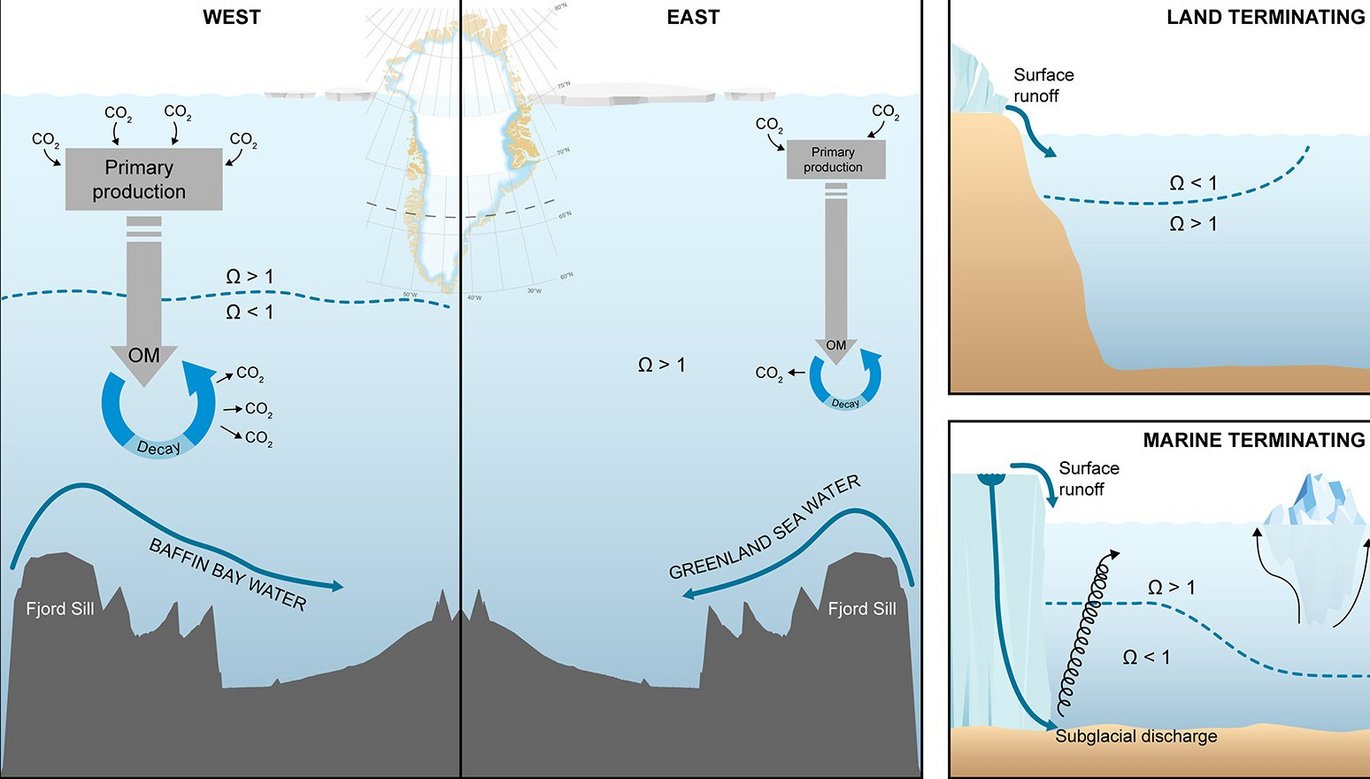Coastal freshening drives acidification state in Greenland fjords
New publication by Henry C. Henson, Johnna M. Holding, Lorenz Meire, Søren Rysgaard, Colin A. Stedmon, Alice Stuart-Lee, Jørgen Bendtsen, Mikael Sejr.

Abstract:
Greenland's fjords and coastal waters are highly productive and sustain important fisheries. However, retreating glaciers and increasing meltwater are changing fjord circulation and biogeochemistry, which may threaten future productivity. The freshening of Greenland fjords caused by unprecedented melting of the Greenland Ice Sheet may alter carbonate chemistry in coastal waters, influencing CO2 uptake and causing biological consequences from acidification. However, few studies to date explore the current acidification state in Greenland coastal waters. Here we present the first-ever large-scale measurements of carbonate system parameters in 16 Greenlandic fjords and seek to identify the drivers of acidification state in these freshening ecosystems. Aragonite saturation state (Ω), a proxy for ocean acidification, was calculated from dissolved inorganic carbon (DIC) and total alkalinity from fjords along the east and west coast of Greenland spanning 68–75°N. Aragonite saturation was primarily >1 in the surface mixed layer. However, undersaturated—or corrosive––conditions (Ω < 1) were observed on both coasts (west: Ω = 0.28–3.11, east: Ω = 0.70–3.07), albeit at different depths. West Greenland fjords were largely corrosive at depth while undersaturation in East Greenland fjords was only observed in surface waters. This reflects a difference in the coastal boundary conditions and mechanisms driving acidification state. We suggest that advection of Sub Polar Mode Water and accumulation of DIC from organic matter decomposition drive corrosive conditions in the West, while freshwater alkalinity dilution drives acidification in the East. The presence of marine terminating glaciers also impacted local acidification states by influencing fjord circulation: upwelling driven by subglacial discharge brought corrosive bottom waters to shallower depths. Meanwhile, discharge from land terminating glaciers strengthened stratification and diluted alkalinity. Regardless of the drivers in each system, increasing freshwater discharge will likely lower carbonate saturation states and impact biotic and abiotic carbon uptake in the future.
